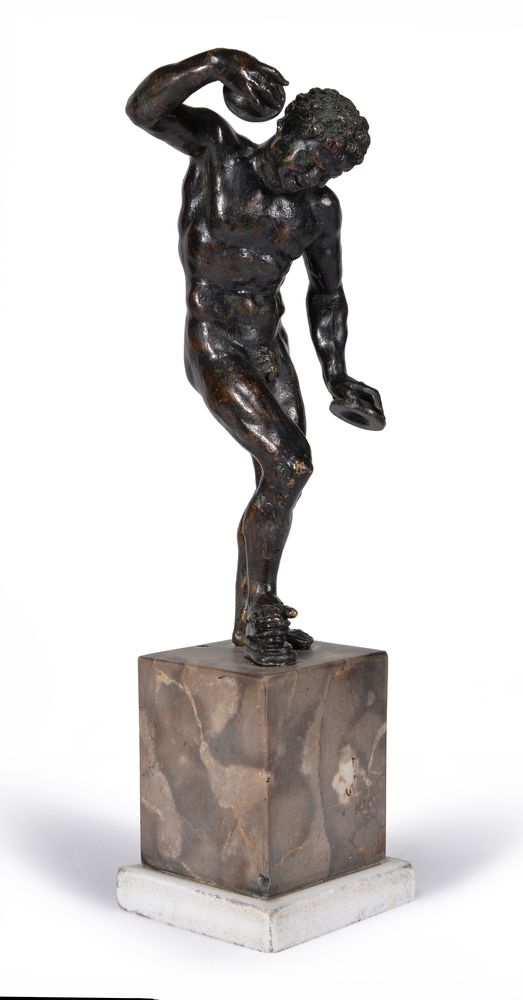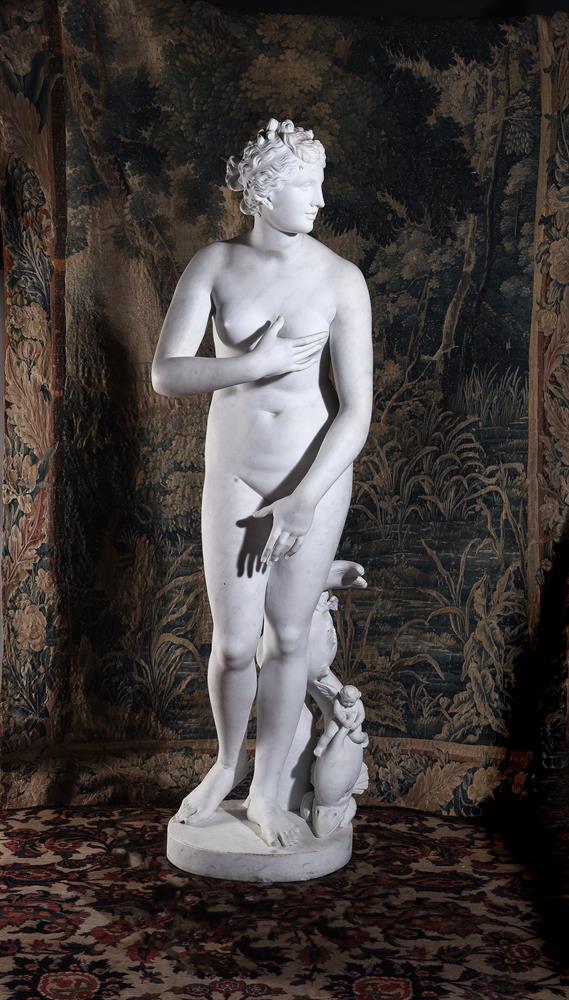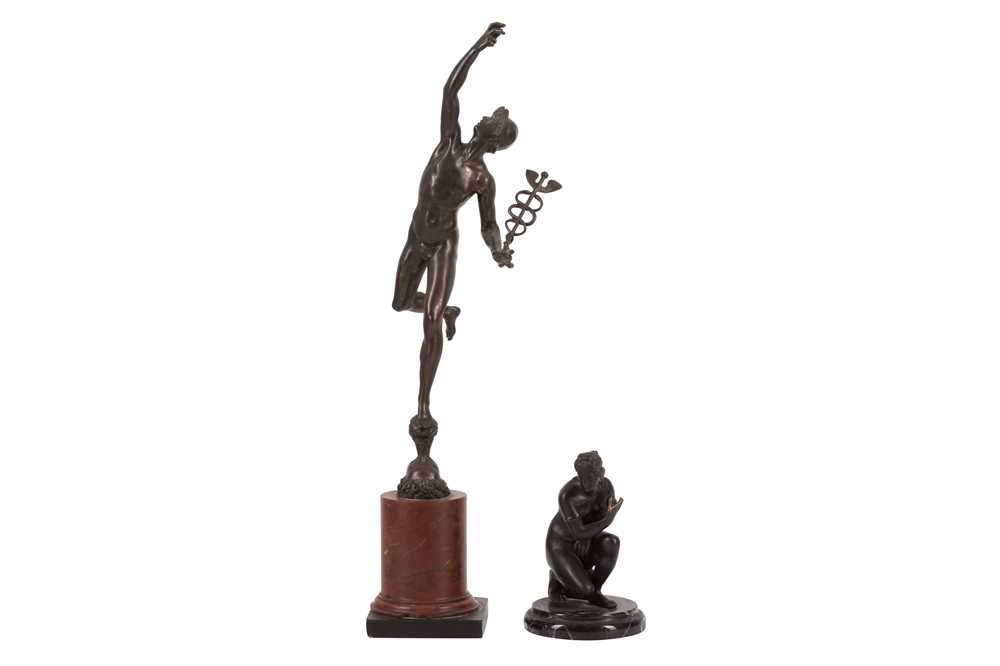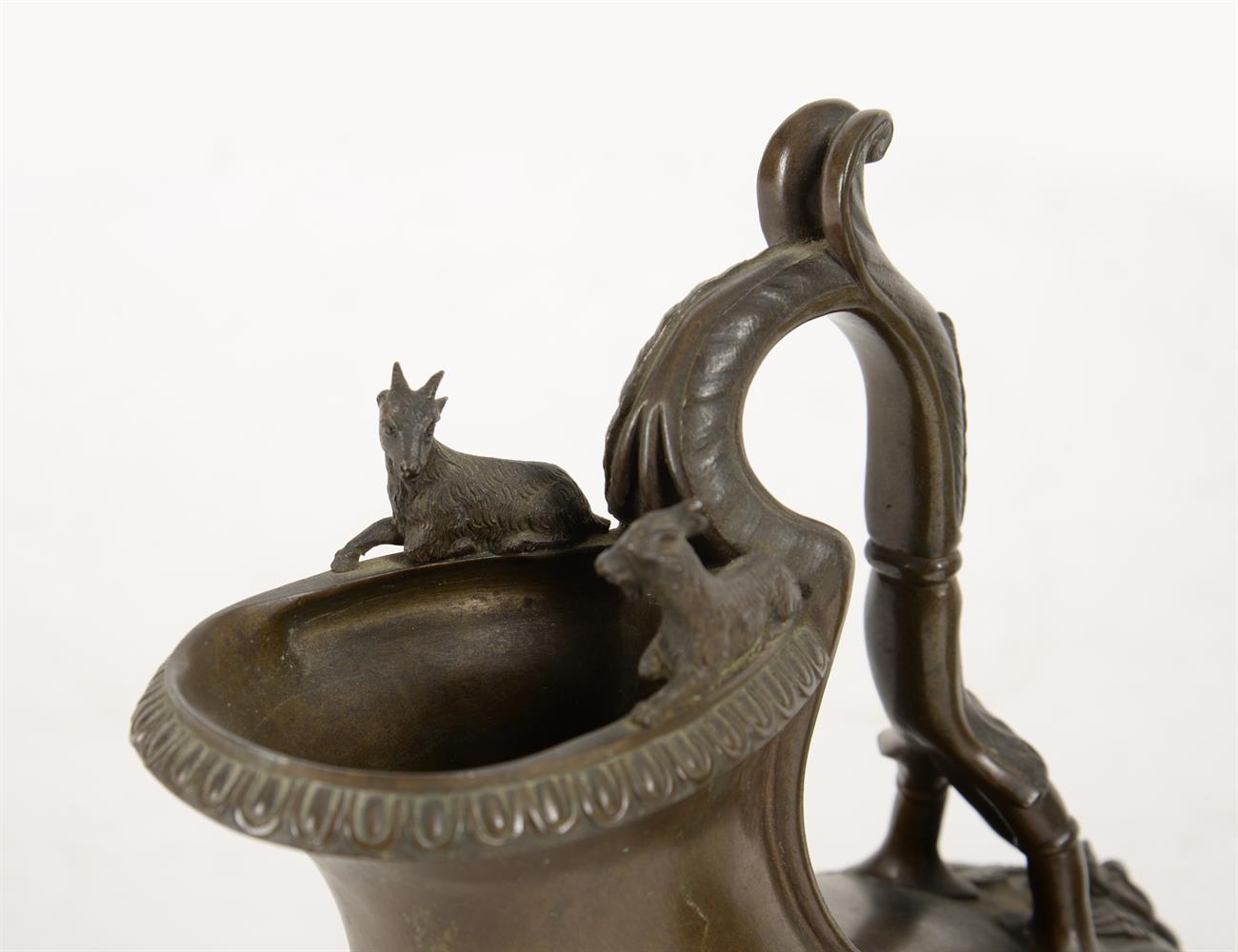After the Antique: A Pulham stoneware figure of Diana de Gabies
circa 1860 stamped Pulhams Terra Cotta Broxbourne on similarly stamped pedestal 213cm.; 83ins high The original of this statue was excavated by Gavin Hamilton in 1792 on Prince Borghese~s property at Gabii outside Rome. In September 1807 it was purchased together with the bulk of the Borghese antiquities by Napoleon Bonaparte, brother- in- law of Prince Camillo Borghese. It was sent from Rome between 1808 and 1811 and by 1820 it was displayed in the Louvre where it still stands. The Pulham company was established in 1820 but made terracotta from around 1846 on into the 20th Century, with workshops in Broxbourne, Hertfordshire. By the 1880~s the company was concentrating on garden and landscape ornaments. A catalogue of 1915, indicates that their wares were made of |Pulhamite| stone, which, is considered the best material for all designed stonework in connection with the garden for the following reasons: Pulhamite stone is more durable than natural stone, for it never decays and never shells or flakes, cement is not used in its composition, it is a lighter substance, making more elegant productions than any other so called artificial stone. This is an important point, as the sides of a Pulhamite vase give more space for soil. It is the colour of light stone. There is nothing deleterious to plant life in it, in fact, owing to the nature of the material, the opposite may be said in its favour. We guarantee its durability, and can refer to work which has been exposed for 70 years. If desired we can reproduce in the antique style, and copies can be made from practically any existing examples. The company held appointments to H.M. King Edward VII, H.M. King George V and H.M. Queen Alexandria. This statue is illustrated in the early 20th Century Pulham and son Garden Ornament catalogue, No 499 Literature see Taste and the Antique by Francis Haskell and Nicholas Penny, Yale University press, 1981.
After the Antique: A Pulham stoneware figure of Diana de Gabies
circa 1860 stamped Pulhams Terra Cotta Broxbourne on similarly stamped pedestal 213cm.; 83ins high The original of this statue was excavated by Gavin Hamilton in 1792 on Prince Borghese~s property at Gabii outside Rome. In September 1807 it was purchased together with the bulk of the Borghese antiquities by Napoleon Bonaparte, brother- in- law of Prince Camillo Borghese. It was sent from Rome between 1808 and 1811 and by 1820 it was displayed in the Louvre where it still stands. The Pulham company was established in 1820 but made terracotta from around 1846 on into the 20th Century, with workshops in Broxbourne, Hertfordshire. By the 1880~s the company was concentrating on garden and landscape ornaments. A catalogue of 1915, indicates that their wares were made of |Pulhamite| stone, which, is considered the best material for all designed stonework in connection with the garden for the following reasons: Pulhamite stone is more durable than natural stone, for it never decays and never shells or flakes, cement is not used in its composition, it is a lighter substance, making more elegant productions than any other so called artificial stone. This is an important point, as the sides of a Pulhamite vase give more space for soil. It is the colour of light stone. There is nothing deleterious to plant life in it, in fact, owing to the nature of the material, the opposite may be said in its favour. We guarantee its durability, and can refer to work which has been exposed for 70 years. If desired we can reproduce in the antique style, and copies can be made from practically any existing examples. The company held appointments to H.M. King Edward VII, H.M. King George V and H.M. Queen Alexandria. This statue is illustrated in the early 20th Century Pulham and son Garden Ornament catalogue, No 499 Literature see Taste and the Antique by Francis Haskell and Nicholas Penny, Yale University press, 1981.















Testen Sie LotSearch und seine Premium-Features 7 Tage - ohne Kosten!
Lassen Sie sich automatisch über neue Objekte in kommenden Auktionen benachrichtigen.
Suchauftrag anlegen